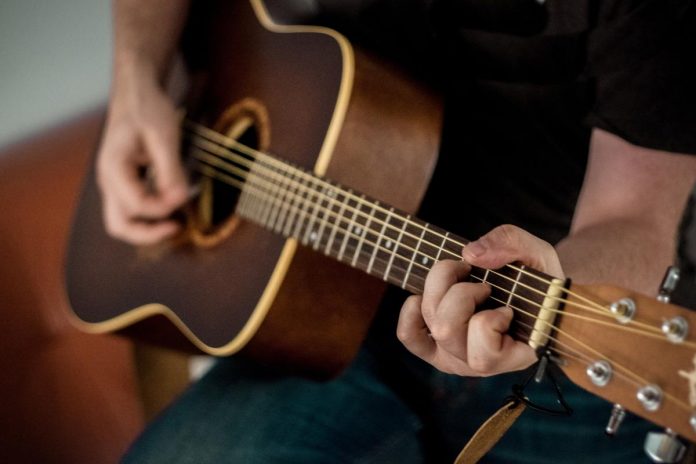There must have been a few moments in our lives when we have thought of learning an instrument. Be it Drums, Tabla, Violin, Guitar or a simple flute. Playing along with your favourite song or a melody has to be one of the best ways to calm your mind. However, with the hectic timetable of everyday life, our will to pursue always remained in the “bucket list”.
But not anymore! With some time in our hands, we can decide how to make the best use of it. We can chase the things we always desired. Maybe working from home? Learning or Mastering a skill? or Finally, kicking of the instrument that you’ve always procrastinated about. To everyone who chose the third option among the “things to do in lockdown”. Here are some tips for you to begin with a Guitar.
Perks of Choosing a Guitar
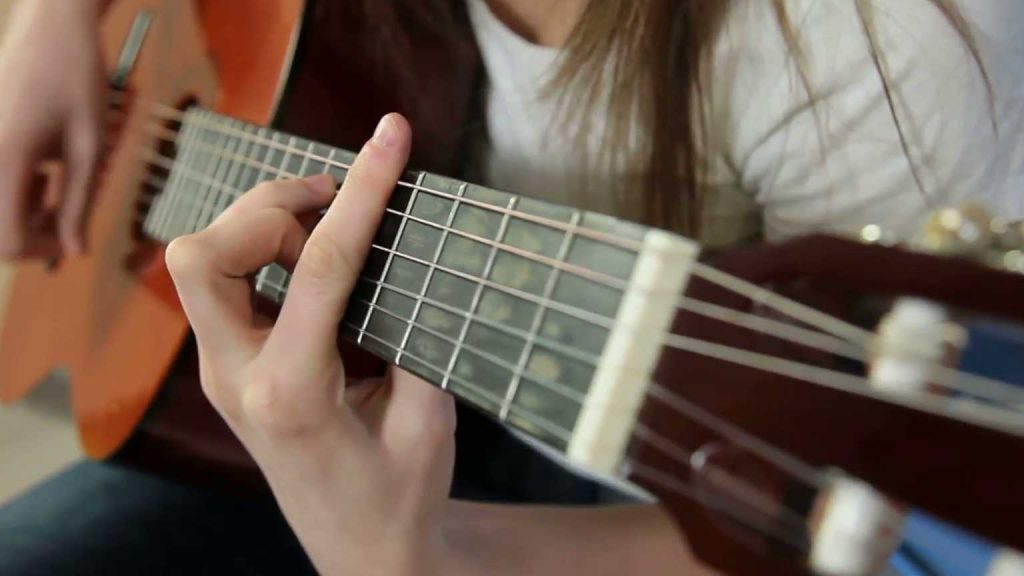
When the song “Oh O Jaane Jaana” was released in 1998, a huge crowd went gaga over the instrument. Well, the catchy music made Guitar popular among the youth. Honestly, it is still one of the most famous tunes to groove or for learning how to play. We cannot deny, we have listened to the tune in at least 10 different ways including our mouths going “tan tanan tan tana tan”, Right?
However, guitar has never been the same in India ever since. Well, it is one of the most famous musical instruments with the number of youngsters wanting to learn the art. Learning a guitar is a sure place to cope up with your extreme emotions, handle stress and become famous among your schools, colleges, offices or other social groups. Quite frankly, it’s impossible that you have not fantasized sitting with a group of friends in a bonfire playing guitar.
Guitar is the fundamental string instrument that lends a helping hand for any other stringed gizmo. Learning it decently opens up a world of possibilities with other instruments. Once you have set your hand on the strings, it lets your fingers run wild. It lets you work your fingers smoothly on Violin, Ukulele, Bass or further explore the stringed devices.
Picking the Ideal Guitar
Learning a guitar can be pretty lengthy task. You have to devote yourself to the instrument to get the hang of it. Before beginning any lessons, make sure you have fallen in love with a guitar. Starting a guitar lesson is like Breaking Bad, it might be a little slow and boring in the beginning, but wait until you unravel the fun and satisfaction!
However, choosing an ideal guitar can be pretty tough for a beginner. Someone familiar with the skill might be able to practice on rough guitar but a newbie needs a good guitar to start with. Here are some tips on how to choose a perfect guitar.
Soft Strings
The first and the foremost necessity while buying the Guitar is to make sure the strings are thin and smooth. Strings of a few guitars can be thick and hard which makes them harder to press. Hence, you can’t strum the guitar if a string isn’t pressed properly. Check if the strings are soft and pressed easily before purchasing it to avoid difficulty in practicing or performing.
Single Cutaway Guitar
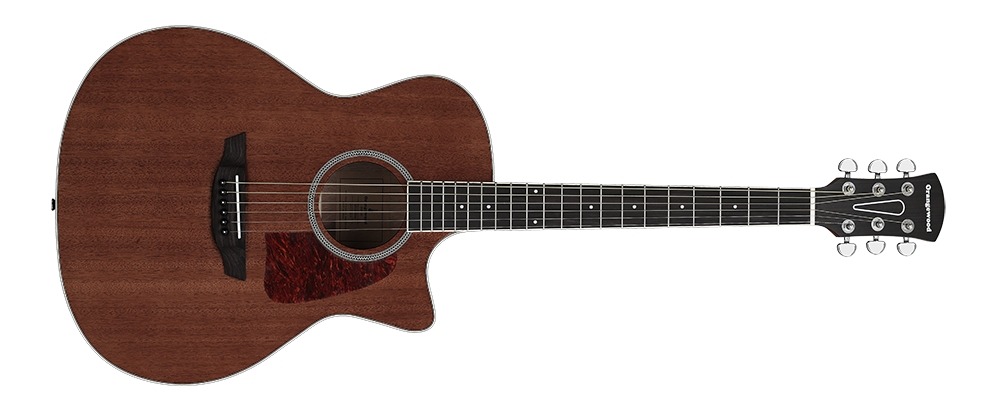
No matter what the shopkeeper says, stick to the single cutaway guitar! A jumbo guitar with full body can be a good choice, but a cut guitar gives you access to more frets. A guitar is better with a single cut below. With a single cut guitar, the fingers can easily reach the higher notes making it more practicable. As a result, it becomes easier to practice more songs.
Minimal Gap between strings and fretboard
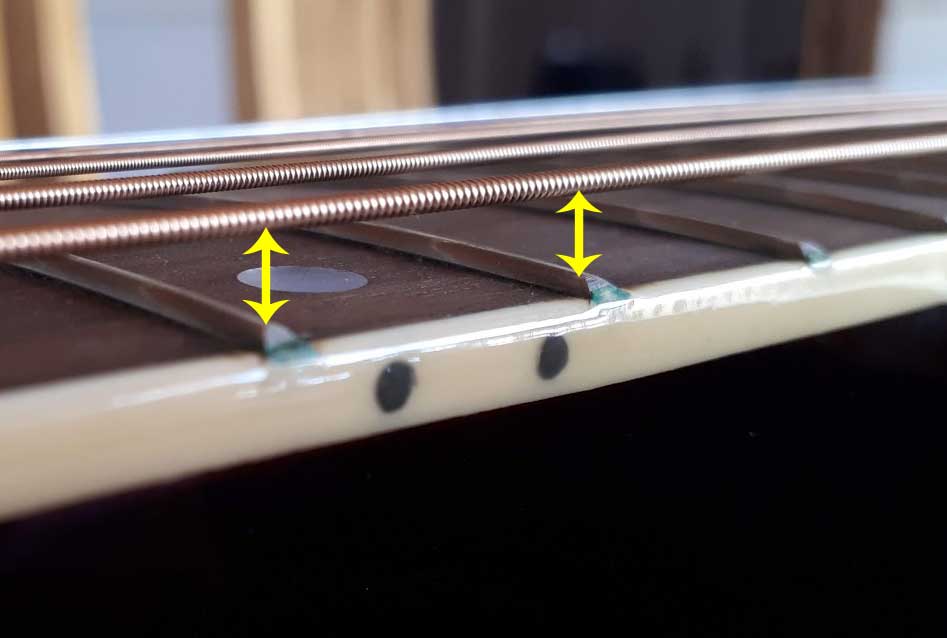
Check the gap between the strings and the fretboard. The gap between the strings and the fretboard needs to be nominal. The ideal gap is considered from 0.25 to 0.30 centimetres, and it can extend up to 0.40cm. If the gap between the two is higher than the desired height, it becomes difficult to press the strings. Well, as I told you, you can’t strum your strings without being able to press them strictly.
Metal Tuning Pegs over Plastic ones
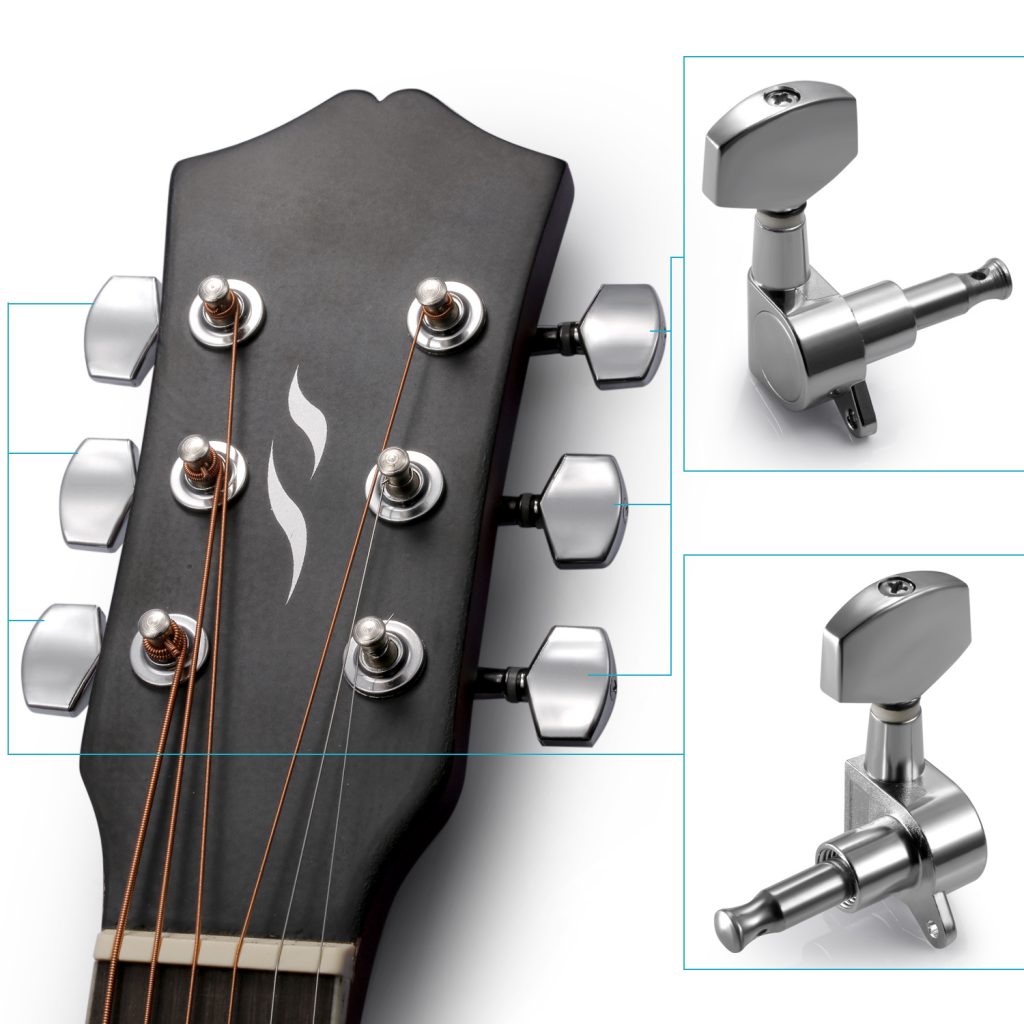
Prefer the guitars with metallic tuning pegs over plastic tuning pegs. Metal pegs are more reliable as the decrease the chances of breaking the strings. They hold the strings better and can be a lot beneficial while tuning the guitar, unlike plastic pegs.
Make sure the Frets are Marked
A guitar is usually marked on 3rd, 5th, 7th, 9th,12th and 15th Frets. Do not settle for anything less!! Make sure a guitar is properly marked on the face of the fretboard as well as on top of it. A mark helps in identifying the frets more easily. For an absolute beginner, it is important to have the mentioned frets marked to create a mental image of the fretboard. It becomes easy to understand the orientation once you get the hang of it. But to begin with, choose the one where marks are rectifiable.
Tips for Beginners
An approach to start the lessons can be pretty confusing. You can learn a guitar online, just like “literally” anything else nowadays. However, there are several ideas to keep in mind, whatever be the appeal to initiate with.
Study the Theory of Music
Scrutinizing the music theory is the first strategy for the start. Before actually playing the instrument, try analysing the theory of music. Understanding the musical flow and breaks can help you build a foundation of your guitar skills. Once, you learn how to strum the music along with the beats. The combination of beats to the guitar strums can help you JAM with other instrumentalists as well. Moving your feet to the rhythm of the beats every time you strum the guitar is essential to strengthen the band techniques. It makes playing any song you love as flat as a pancake.
Memorizing Chords and Chord Families
Begin with the basic chords and practice till you memorize it. Once, you learn a specific chord and the chord family, stick to it until finishing it. Moving forward without completely practicing it can be risky. Practice the chords thoroughly, learn the chord family associated with it and practice it in a progression with the chord shift. After you have memorized the chords, move on to the next chord and chord family.
Regular Finger Exercises for Tabs and Finger-picking
There are a few exercises for developing the guitar skills. These exercises help you get better at the movement of your finger for playing instrumental music. Start the exercise slow but let it be in a flow. Increase the speed in a period of time when you’re comfortable with the present speed, just like a treadmill. Practicing the exercises regularly can assist you in moving the fingers precisely to the beats and play song on your mind accurately.
Practicing Progressions and Scales Regularly
Just like any other artform, practicing is the key. Choose the chord family you have to practice and practice the hell out of it. Select a song you like that advances with the family of the chords you’re practicing. Practicing a song with the progression will both keep you engaging in the practice and help you shift chords at a faster rate. Practice the chords on without the beats first, then add the beats and try to match the tempo. Ultimate goal is to be comfortable with the chord progression of the song to sing along! AND having fun with it.
Do not use Finger Caps!!
There wasn’t a time when I didn’t think of getting finger caps to avoid the cuts. But piece of advice? Let them cut your fingertips! Using the finger caps to start with might seem easier as it avoids the pain. However, let me recall the most clichéd saying for you “No Pain, No Gain”. You’ll always remain a beginner if you start with the finger caps. Eventual intention is to make your fingertips as hard as possible. The strength of the tips determines your skills as a guitarist.
Think of the situation, you have a stage show to perform at, you bring your guitar and accessories, you’re all set but you can’t find the caps at the final moment before getting on the stage. As you haven’t practiced in the typical way, you can’t perform for a long time without the caps because it starts to hurt. Well, it was a nightmare, wasn’t it? Let the fingers hurt, you’re only letting them grow!
Learn Tuning, Aligning and Changing the Strings Properly
Maintaining a guitar is as salient as learning how to play it. You might be the best player in the world. Yet, you’d have to wait for someone to fix your guitar if you don’t know how it is done. Learn how to tune a guitar, align it when it goes bad and to change the strings when they rupture. These additional skills are what makes you a good guitarist. Taking care of your guitar is as necessary as performing with it.
Start with an Electric Guitar, if possible
Highly Unpopular opinion, but start with an electric guitar if possible. As we know, an electric guitar is connected to a speaker. This saves the effort to hard press the strings that an acoustic guitar requires. The speed of chord progression and tabs can be made accurate as the electric guitar needs much lighter touches. It can be used to start as the speed and precision can be picked up by practicing on it. However, it is better to start learning with an acoustic guitar to learn it in a traditional way from the start.
It is one of the most beautiful instruments to start with. You’ll see yourself falling in love with a Guitar once you start devoting yourself to learn. If at all, you ever wanted to learn a guitar, start soon. For any other query regarding learning a Guitar, feel free to comment below or hit us up.
